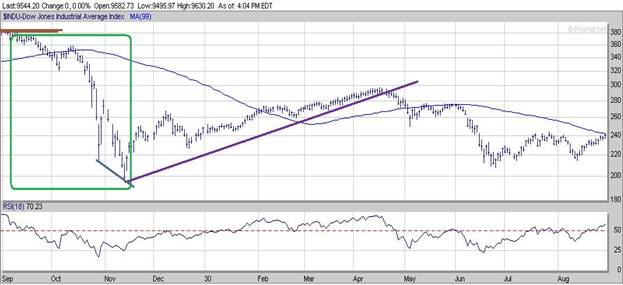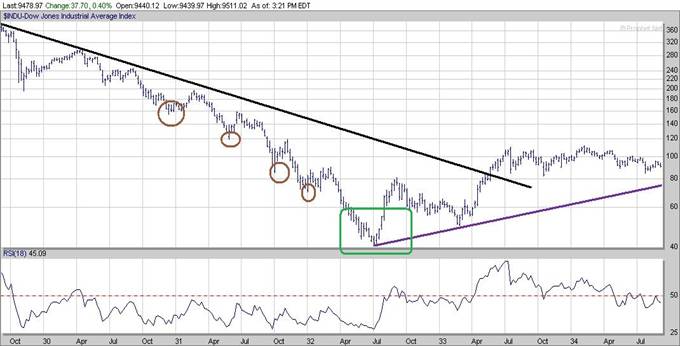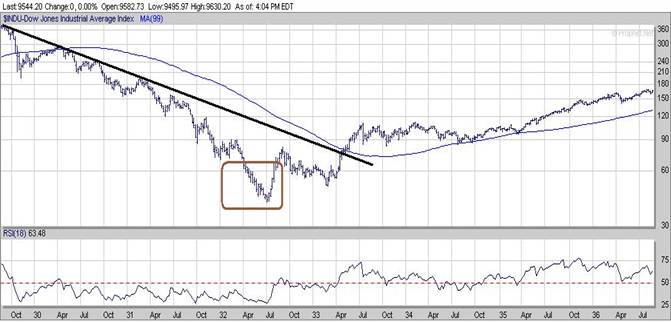
Market Crash 1929: Unveiling the Story
Updated May 11, 2024
Stock market crash 1929 facts; Never Buy When the Masses are Jumping up in Joy. Sol Palha
Introduction: The 1929 Market Crash – A Cautionary Tale of Exuberance and Catastrophe
The Stock Market Crash of 1929, often called Black Tuesday, marked the end of the Roaring Twenties and the start of the Great Depression. As legendary investor Jesse Livermore noted, “The stock market is never obvious. It is designed to fool most people, most of the time.”
The crash followed a decade of prosperity and widespread speculation. Investors swept up in optimism and bought stocks on margin, driving prices to unsustainable heights. The bubble burst on October 29, 1929, sending shockwaves through the financial world.
Yet, the 1929 crash is part of a recurring pattern. The same themes of greed, speculation, and risk disregard are evident from Tulip Mania to the Dotcom Bubble. Each crash followed prosperity and ended in panic selling, but it also presented unique buying opportunities for contrarian investors who understood intrinsic value.
The 1929 crash serves as a cautionary tale, reminding us of the dangers of unchecked speculation and the importance of understanding actual asset value. As we navigate today’s markets, these lessons can help us avoid pitfalls and seize opportunities presented by crises. Livermore states, “There is only one side to the stock market; and it is not the bull side or the bear side, but the right side.”
Reflections on Market Turmoil: Lessons from Dow’s Past and Present Resilience
One of the most harrowing corrections in Dow’s history unfolded between September and November of 1929, witnessing a staggering 50% drop. A chilling déjà vu echoed in 2008 when, from September to November, the Dow plummeted from 11600 to approximately 7550, albeit with a slightly milder 34% decline. This historical resonance prompts reflection, emphasizing that stock market crashes, such as the notorious 1929 crash and its 2008 counterpart, shouldn’t merely be catalogued as facts based on fear. Instead, they should be perceived as unique opportunities for strategic investment.
In both instances, the false bottoms in November 1929 and 2008 were cautionary tales. The seemingly stabilizing moments turned out to be deceptive, highlighting the unpredictable nature of market recoveries.
Following the trough in November 1929, the Dow embarked on a noteworthy ascent, climbing from approximately 190 to a high of around 300 by April 1930—a remarkable 57% gain. Strikingly reminiscent, the ongoing market trajectory since March 2009 mirrors this pattern, with the Dow currently boasting a substantial 47% increase.
This historical perspective underscores the cyclical nature of markets and the potential for recovery even after severe downturns. The parallel between these episodes offers valuable insights for those navigating the complex landscape of financial markets, suggesting that strategic patience and a discerning eye can turn periods of turmoil into opportunities for substantial gains.
Market Crash 1929: Lessons and the Ominous Patterns of 2008
In the 1929 market crash, an undercurrent of euphoria permeated the masses, reminiscent of the infamous tulip bubble. A keen observer would have recognized the telltale signs, signalling that trouble was looming just around the corner.
The Dow chart of November 1929 starkly portrayed a false bottom, mirroring the deceptive stabilization witnessed in November 2008. The subsequent March 2009 bottom raises intriguing questions about the Dow’s potential trajectory, reminiscent of the historical pattern where successive so-called bottoms led to a staggering 90% loss in total value.
A pivotal indicator emerges – should the Dow breach 9800 on low-volume trading, a clear warning signal for a formidable correction may be on the horizon. Traders willing to delve into the intricacies of the market are encouraged to monitor these ranges closely. For risk-takers, considering short positions in stocks like AIG, primarily through the purchase of puts or LEN, could be a strategic move if the Dow reaches the specified levels on low volume.
Acknowledging the markets’ exuberance, a cautious stance is advised. Waiting for a substantial pullback before initiating new positions aligns with risk-to-reward models providing notably high-risk readings. This approach, reinforced by prudent decision-making, echoes a September 15, 2009 market update.
As the markets have gotten so ahead of themselves, we will wait for a decent to solid pullback before we open any new positions unless we especially issue entry points for specific stocks. Our risk-to-reward models are giving extremely high-risk readings; when this happens, it is prudent not to go against them—MarketUpdate Sept 15, 2009.
The Crucial Role of Patience and Discipline in Successful Investing
In a landscape where the herd is increasingly adopting a bullish stance, the wisdom of blindly following the crowd comes into question. Successful leaders in investing recognize the necessity of making tough choices, often requiring them to look in a direction contrary to the prevailing herd mentality—a trend that the majority may find disagreeable. This emphasizes the indispensable role of patience and discipline in the decision-making process. These two key elements set successful investors apart in the dynamic and often unpredictable world of financial markets.
Our risk to reward models continue to issue very high readings and are close to setting new records indicating that jumping into the market now is not a wise choice. It’s time for traders to start keeping a diary again; this time instead of dealing with fear as was the case late last year and early this year you are going to be dealing with euphoria. You will see that the result is the same and that is why we have repeatedly stated that trading based on emotions is a perfect recipe for disaster. When it comes to trading, there is no place for Joy/euphoria and even less place for fear. Be a practical trader, not an emotional one. Market Update Sept 22, 2009.
Analyzing Disparities and Debt Dependency: Navigating Economic Shifts and Foundations
While the Dow could rally by a higher percentage than in 1929 due to the expanded participant base, the current economic landscape presents unique challenges. The U.S. faces a staggering $11 trillion deficit, starkly contrasting to the 1920s when it held a prominent manufacturing position.
Today, consumer spending constitutes over 70% of GDP. However, this spending creates no lasting value and an economy reliant on increasing debt is unsustainable. True prosperity lies in investing in capital goods, as China’s focus on infrastructure and manufacturing demonstrates.
If historical patterns hold, the Dow could shed 90% from its all-time high of 14,000. The current scenario appears graver than the 1930s, with the possibility that March 2009 lows may not hold.
The path to sustainable growth requires a shift from debt-driven consumption to investments in productive assets. As the economic foundation remains fragile, built on “paper bricks,” caution and consideration of worst-case scenarios are warranted in navigating the challenges ahead.
Navigating Economic Crossroads: Lessons from Dow’s Historical Bottoms and Current Fragilities
The Dow’s tumultuous history reveals intriguing patterns. The initial bottom in November 1929, later revealed as a deceptive precursor, set the stage for a colossal correction. It took 13 years, until 1945, for the Dow to surpass the earlier touted bottom at 190 after establishing a long-term bottom at 40.
This historical perspective underscores the potential hidden within moments of crisis. In July 1932, as the Dow plummeted to an unprecedented low of 40, it presented a rare chance to transform a modest investment into a multimillion-dollar fortune. While pinpointing the exact bottom is elusive, starting to invest around April 1932 would have yielded exceptional returns despite a further 45% drop.
However, the current economic landscape, marked by the housing crisis, job losses, cautious consumer spending, and hyperinflation threats, casts doubt on the feasibility of a new bull market. Recent data shows consumers drastically reducing borrowing, with a $21.6 billion credit contraction in July.
Several indicators further question the sustainability of a long-term bull market. Volume concentration in a handful of stocks, like AIG, accounting for over 30-40% of total volume, raises concerns. Global trade also provides compelling signals, with Japanese exports still lagging 37% from their peak and Toyota shutting down an assembly plant for the first time in over 70 years.
As we navigate these critical crossroads, the skewed volume distribution and global economic indicators underscore the need for cautious optimism and strategic consideration of the broader financial landscape. The Dow’s historical lessons remind us that adversity can precede untapped opportunities, but the current fragilities demand vigilance and adaptability in the face of unprecedented challenges.
A Glimpse into Smart Money’s Strategy and Ominous Trends
Recent market activity reveals significant insights, especially considering the highest volume day in the past 30 days on September 1st, followed closely by the second-highest volume day on the 17th, concluding with the markets in the red. This pattern suggests a strategic move by smart money to trim positions, particularly evident as the Dow closed negatively on September 23rd despite hitting an 11-month intraday high.
The situation becomes more pronounced if the Dow closes below 9600 on a weekly basis, potentially confirming a corrective phase. Volatility readings surpassing 1000 signal an expectation of extreme market actions, both upward and downward. The prolonged correction timeframe indicates the likelihood of this being the most formidable correction since the rally’s inception in March 2009.
These nuanced market indicators prompt a cautious approach, urging traders to brace for heightened volatility and a potential market trajectory shift.
Following the 2009 crash, the economic outlook shifted, which is the current situation. It is important to note that although market crashes such as the one in 1929 can be concerning, they can also provide great opportunities for long-term investments.
Market Update Reflections and Sentiment Analysis: Identifying Pivotal Reversals and the Drift of Least Resistance
The September 2009 Market Update highlighted potential market trajectory shifts. The Dow’s pivotal reversal day on the 23rd, closing negatively after reaching 9917, typically precedes a corrective phase. If the Dow fails to surpass 9600 and sustain it for five days, an intensifying correction becomes likely. The current pattern suggests a correction rather than a crash, with a chance for a post-correction rally to new highs.
Analyzing market sentiment reveals an intriguing pattern. With bullish readings only marginally exceeding historical averages and subdued bears, a hypothesis emerges: when bulls are only slightly active, the market tends to drift toward least resistance—upward in this scenario .
This nuanced approach reflects a dynamic understanding of market behaviour. If the market pulls back, it aligns with the perspective that more substantial deviations present more significant opportunities in an uptrend. The strategy remains diversified, continually issuing new plays to navigate evolving trends strategically.
As legendary trader Jesse Livermore noted, “The market does not beat them. They beat themselves because though they have brains, they cannot sit tight.” Identifying pivotal reversals and understanding market sentiment is crucial for seizing opportunities and managing risk in an ever-changing market landscape.
There are more things to alarm us than to harm us, and we suffer more often in apprehension than in reality. – Seneca, 4 B.C. � 65 A.D., Spanish-born Roman Statesman, philosopher
Tangible Reads
Weak AI & Financial singularity: What it means for Stock Markets
Global warming hoax proof? Top US Scientist Resigns
Stock Market Patterns and Donald Trump’s Chances Of Winning
Two Professors with Incredible Track Record Predict A Trump Win
Trump-The New Stock Market vix Factor
Millennials Would Work For Less With Socially Responsible Company
Trey Gowdy States Harry Reid on Drugs regarding Hillary Email Scandal
Crude Oil Market-Higher prices or Market Crash
Trump Meltdown: The Establishment’s Attack on a Political Outsider
Tactical Investor Election Polls-Updated Constantly Until Election day
Trump Trumps Clinton in Third Debate

No Doc Loans Resurface: Banks Set to Exploit the Masses
Wall Street & Banks looking to bring back Liar Loans
Share Repurchase Binge Only Force Keeping Stock Market Bull Alive
Fed Decision Limiting Market Downside Action
Sleeping Myths: The Real Story Behind These Myths
Hillary Clinton’s Lies: The Truth Behind the Controversies





